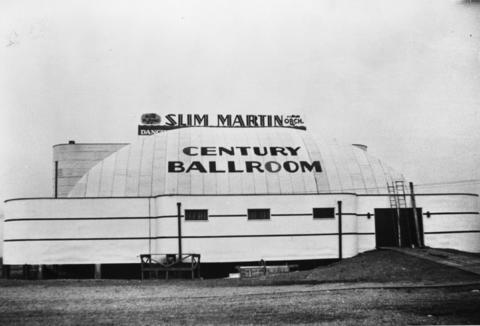Identity elements
Reference code
Name and location of repository
Level of description
Item
Title
TPL-8718
Date(s)
Extent
Name of creator
Content and structure elements
Scope and content
The Century Ballroom, with rooftop sign advertising dancing to the strains of Slim Martin and his Orchestra, known as the "Maestro of Mirth and Melody." During the defense industry boom of the World War II years, the Century Ballroom was one of the hottest venues in the Northwest. All of the big bands played there, the Dorseys, Kay Kyser, the Lombardo brothers and Ted Fio Rito. The ballroom was built by developers Rocco (Mac) Manza and Emilio James (Jimmy) Zarelli in 1934. It was their second business venture, the first being "a little hamburger stand in Fife" called the Poodle Dog, now a recognized landmark. The Century Ballroom was located just north of the Dog. It was built by contractor Bonnie MacDonald and the new developers paid him back as they could. The building had 20,000 square feet of floor space and cost $28,000. It consistently lost money for the first eight years. With the boom in wartime industry, the pair struck pay dirt. The ballroom sometimes ran two shifts of dances with the second starting at 1:30a.m. for the swing shift workers. With the 1950's, big band music was out and rock was in. A fire in January of 1964 gutted the interior of what was once the Century Ballroom. The flames swept the length of the building just under the roof and then burst to heights of 20 to 30 feet and were visible for miles. Nine businesses were housed at this siteΓÇöincluding Toppers IGA Market, FujiΓÇÖs Ten Cent Store, and the Fife City Hall. Toppers IGA and Fuji's Ten Cent Store never resumed business in Fife. (TNT 3/23/1980, pg. D9)
Century Ballroom (Fife); Ballrooms--Fife--1930-1940; Musicians--Fife--1930-1940;

